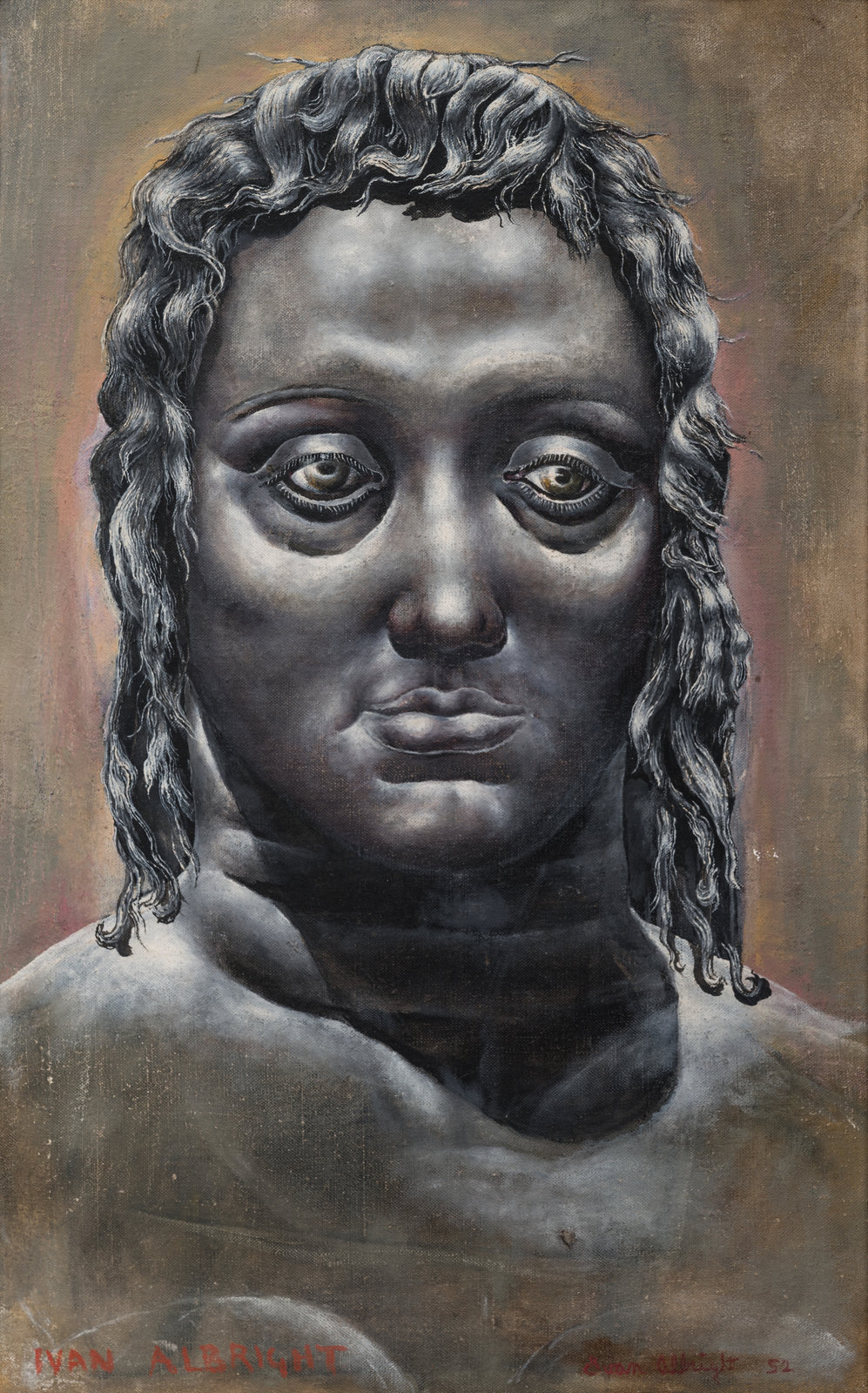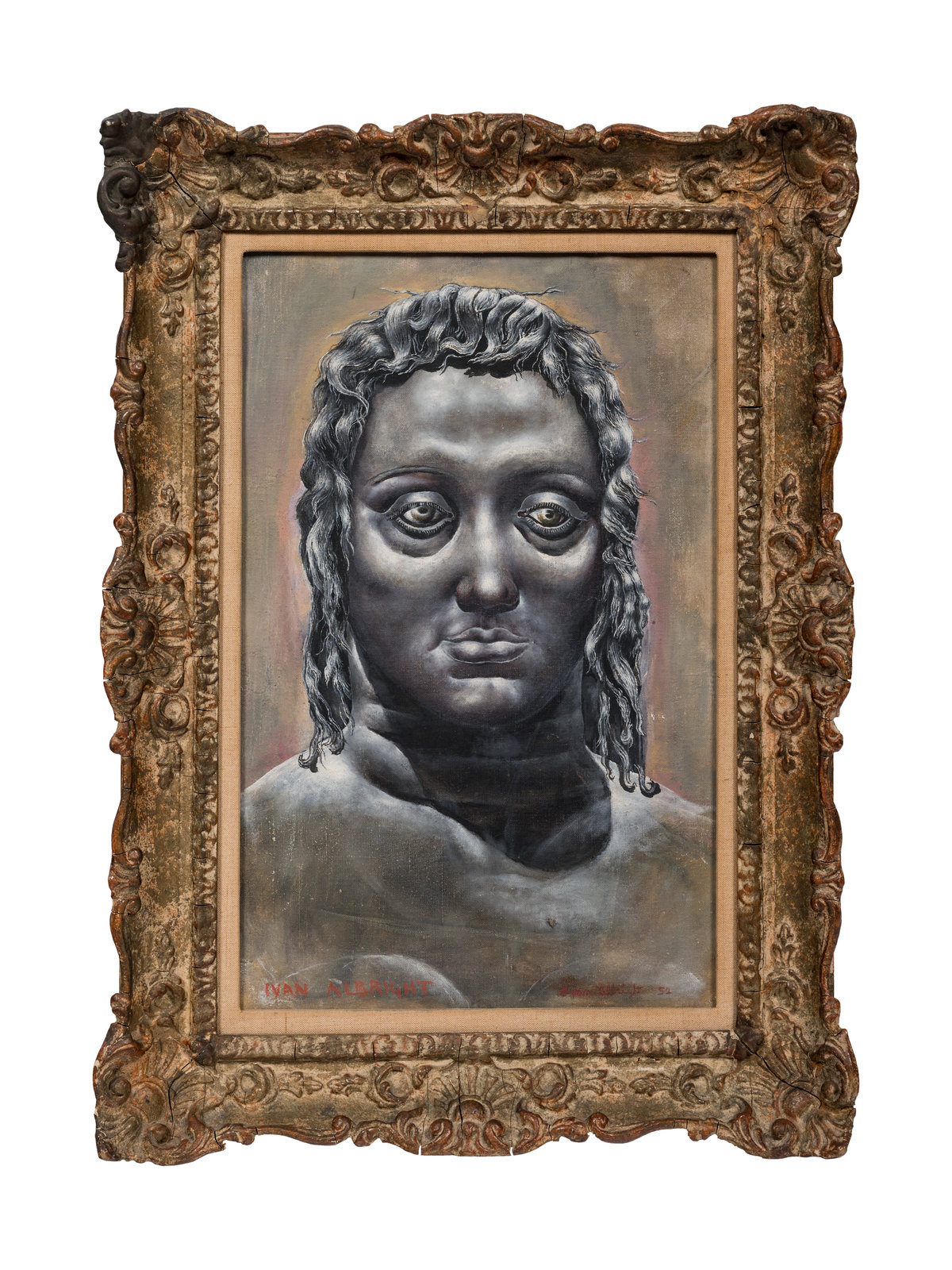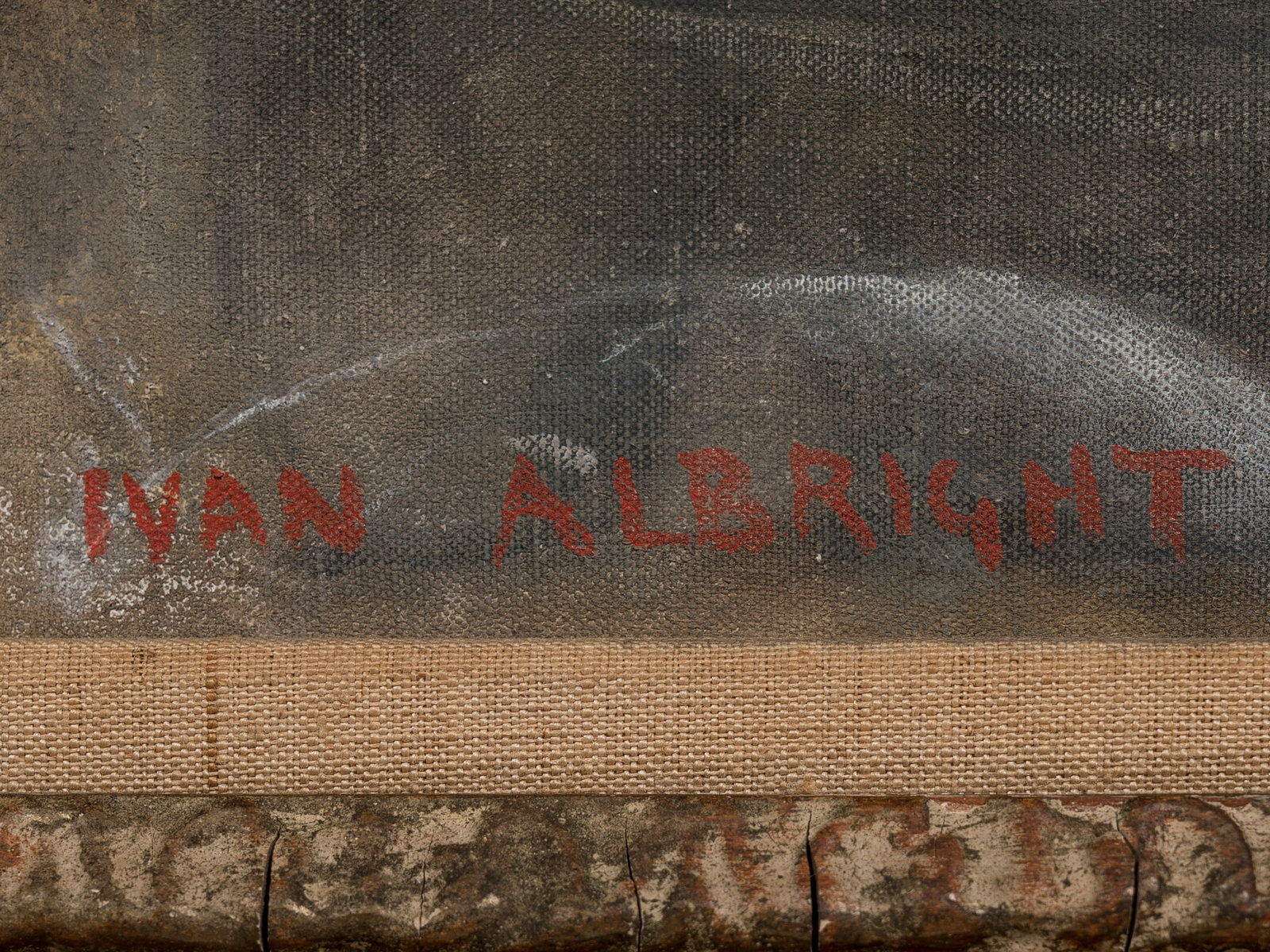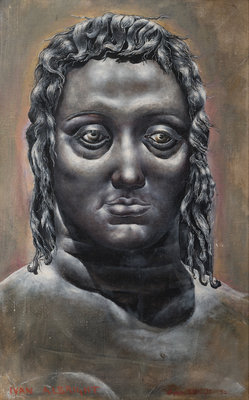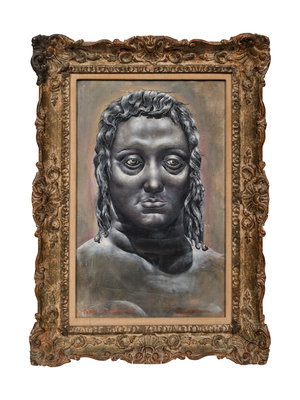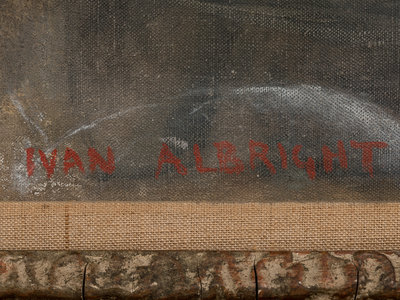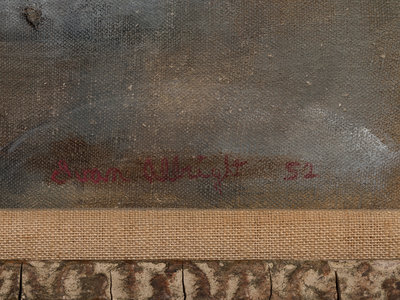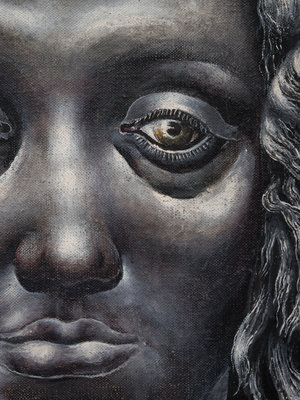Ivan Albright
(American, 1897–1983)
Troubled Waves (Silence)
, 1952
Sale 909 - American and European Art
Sep 27, 2021
10:00AM CT
Live / Chicago
Estimate
$30,000 -
$50,000
Sold for $34,375
Sold prices are inclusive of Buyer’s Premium
Lot Description
Ivan Albright
(American, 1897–1983)
Troubled Waves (Silence)
, 1952oil on canvas
signed Ivan Albright and dated (lower right); signed (lower left)
15 x 10 ¼ inches.
Property from the Collection of Daniel Weinberg, Highland Park, Illinois
The present oil painting bears a Newcomb-Macklin frame.
Provenance:
The Artist
Dr. & Mrs. Jack Weinberg, Glencoe, Illinois, acquired directly from the Artist
Thence by descent to the present owner
Exhibited:
Chicago, Art Institute of Chicago, Retrospective: Ivan Albright, October 30 - December 27, 1964 (also traveled to New York, Whitney Museum of American Art, February 3 - March 21, 1965), no. 38, p. 48
Chicago, Art Institute of Chicago, Ivan Albright, February 20 - May 11, 1997, no. 49, illus.
Literature:
Michael Croydon, Ivan Albright, New York, 1978, pl. 72, p. 165, illus.
Lot note:
An uncompromising artist with an unwavering vision, Ivan Albright’s Troubled Waves (Silence), 1952, reveals his quest for the abstract while attending to the minutest detail of the real. Already widely traveled, after his 1946 marriage to Josephine Patterson, Albright went on more far-flung adventures, including to Russia, China, Japan, Iran, Kenya, Alaska, and England. The present painting was likely inspired by a trip to Greece the Albrights took in the summer of 1952. While there, the artist was impressed by the marble kouroi and korai of the Archaic period. Produced from roughly 650 to 500 BCE, these life-size or larger freestanding figures were carved with abstract, idealized features. To an artist preoccupied with the depiction of the transience of matter, these statues, with their austere simplicity, may have expressed an appealing immutability.
Upon his return to the United States, Albright executed Troubled Waves (Silence) as a reaction to the kouroi. With the smooth handling of the skin and monochromatic palette, this artwork appears almost to be a portrait of a sculpted head. The volumetric character of the figure is emphasized by deep shadows and bright highlights. For Albright, light was a tool to be manipulated, made to dance along the contours and fill the spaces within and around his painted forms. As Michael Croydon so aptly put it, he was a master of the “choreography of chiaroscuro.” (Ivan Albright, New York, 1978, p. 40) Here, the light seems to flutter along the surfaces of the head and coiled hair and penetrates the deep ravines and gorges of the eyes and neck. This use of light suggests the flickering illumination that characterizes the art of El Greco, an artist Albright greatly admired.
Albright was also particularly interested in how time would impact flesh, wood, and even statuary, as he reflected on their future states. This was not a macabre interest, but a view on life itself:
“’A face is a soul looking out at one who… will be dead tomorrow,’ Albright once wrote. As these figures dwell on their own mortality they also stand as mirror images for us to meditate upon. Appropriately though curiously, Albright’s figures must face this challenge alone…Individuals are represented as solitary souls caught between the harsh light of reality and an enveloping darkness. Those who inhabit these bodies must come to terms with their own decay and mortality. Yet Albright clearly felt there was hope in even the most horrific of these visions and summarized his attitude as such, in any part of life you find something either growing or disintegrating. All life is strong and powerful, even in the process of dissolution’” (Robert Cozzolino, Ivan Le Lorraine Albright (1897-1983), Illinois Historical Art Project, illinoisart.org/ivan-albright-c1mnq, accessed 13 August 2021).
To the artist, time especially was a dimension that allowed him to see his models from every viewpoint in the search for the absolute. In Troubled Waves (Silence), time seems to have stopped in the luminous shadows of the figure, capturing the unchanging power of the eternal.
An independently wealthy man, Albright felt no pressure to sell his work. As a result, he kept the majority of his paintings, most of which are now housed in various museums. The present artwork, which bears a Newcomb-Macklin frame, is one of the few still in private hands and the first oil painting of this caliber to ever be offered at auction.
Condition Report
The physical condition of lots in our auctions can vary due to
age, normal wear and tear, previous damage, and
restoration/repair. All lots are sold "AS IS," in the condition
they are in at the time of the auction, and we and the seller make
no representation or warranty and assume no liability of any kind
as to a lot's condition. Any reference to condition in a catalogue
description or a condition report shall not amount to a full
accounting of condition. Condition reports prepared by Hindman
staff are provided as a convenience and may be requested from the
Department prior to bidding.
The absence of a posted condition report on the Hindman website or
in our catalogues should not be interpreted as commentary on an
item's condition. Prospective buyers are responsible for
inspecting a lot or sending their agent or conservator to inspect
the lot on their behalf, and for ensuring that they have
requested, received and understood any condition report provided
by Hindman.
Please email conditionreports@hindmanauctions.com for any additional information or questions you may have regarding this lot.
